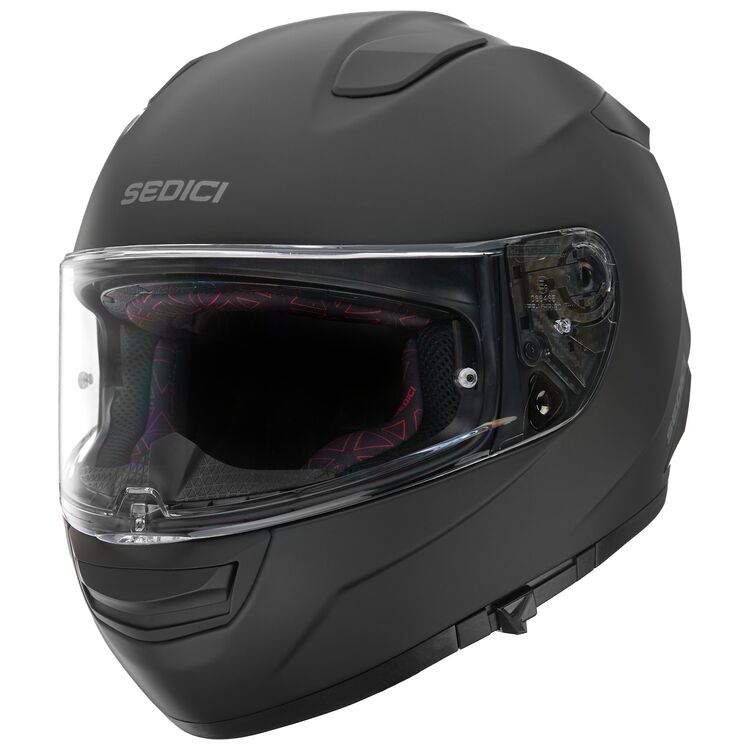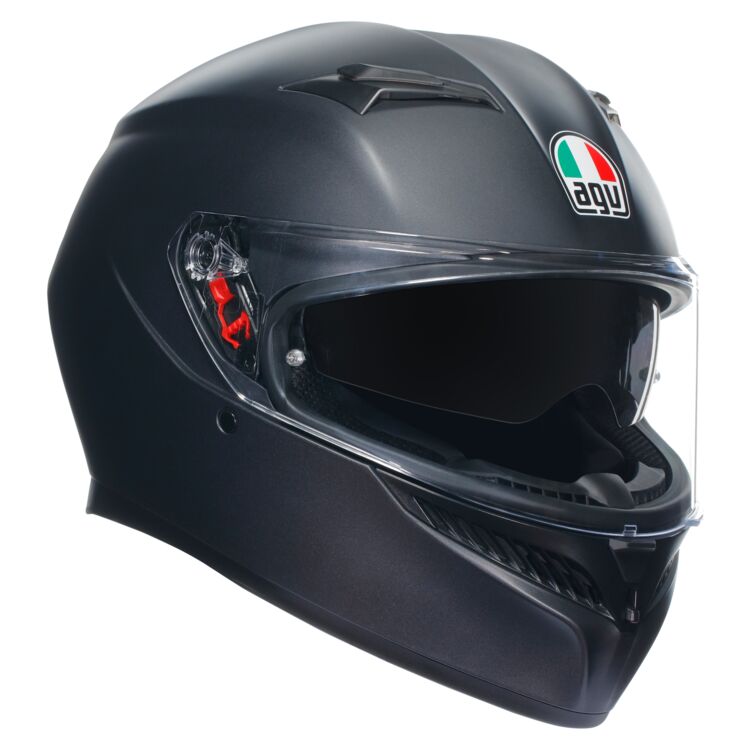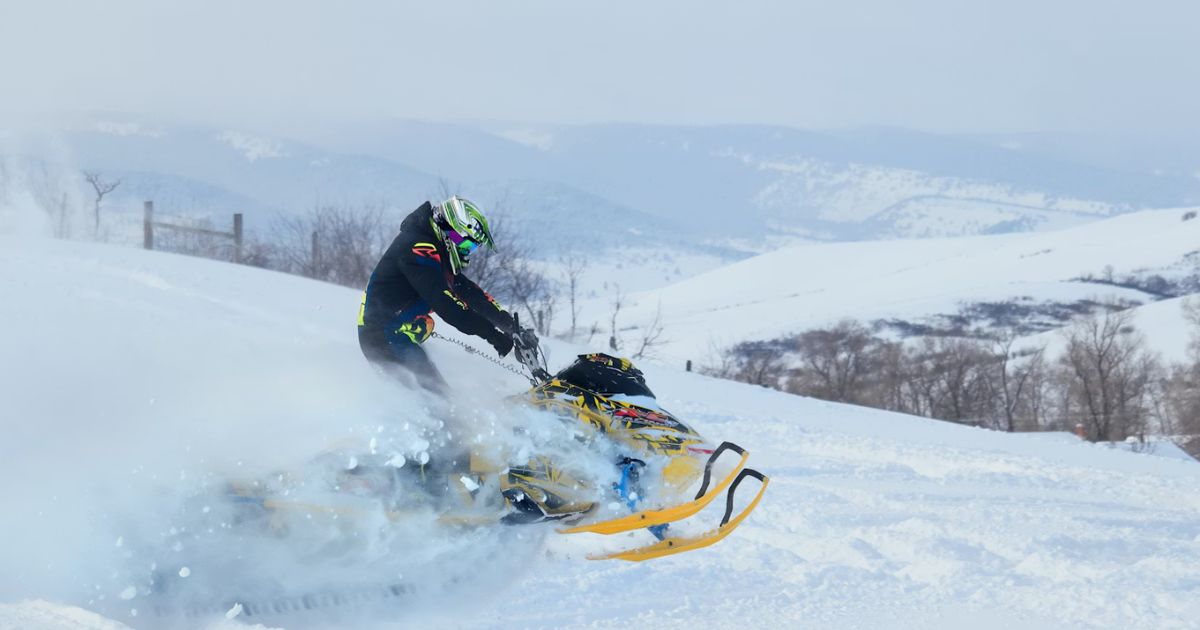
Best Budget Motorcycle Helmets That Don’t Suck (And Keep You Safe)
left for contents
High price doesn’t always mean high performance. Not everyone’s buying MotoGP-tier helmets, and that’s okay.
The good news is that you can absolutely find a lid that keeps your head safe and your wallet happy. By the time you finish reading this, you’ll know exactly which budget-friendly helmet is the perfect match for your kind of riding, saving you time and cash.

Now, let me hit you with a few truths that might stir the pot a little:
- Spending over $500 on a helmet doesn’t automatically make you safer than a well-chosen $250 one; safety certifications matter way more than price tags.
- Second, the idea of one single “best” budget helmet is a myth, since the best one is the one that fits your head shape, your riding style, and your specific needs.
- And finally, sometimes that helmet sitting comfortably under $400 has the exact features (like an internal sun visor or great ventilation) that you’ll actually use and appreciate more on your daily ride than some fancy feature on a lid costing twice as much.
Ready to find your perfect budget lid? Let’s ride.
To kick things off, here’s a quick breakdown of four solid sub-$400 helmets—each matched to a different riding style, with real pros, cons, and no fluff.
A premium, lightweight helmet with advanced MIPS protection and aerodynamic design for all riding positions. | Evan rode in this helmet across America in 2022 and has worn it the tropical climate of Thailand as well. It's the ideal all-around street and touring helmet for a fair price: master of none, but great at everything. Read our long term review here. | A do-everything helmet, it's as comfortable on trails as the highway. Shocking for a modular, it's DOT and ECE approved. | A sleek, aerodynamic helmet built for comfort, safety, and everyday performance. |
|
|
|
|
|
|
|
|
A premium, lightweight helmet with advanced MIPS protection and aerodynamic design for all riding positions.
- Advanced MIPS impact protection
- Lightweight fiberglass shell
- Excellent ventilation
- Pinlock insert sold separately
Evan rode in this helmet across America in 2022 and has worn it the tropical climate of Thailand as well. It's the ideal all-around street and touring helmet for a fair price: master of none, but great at everything. Read our long term review here.
- Sturdy build quality from the padding to the visor
- Composite AIM shell (not plastic / polycarbonate)
- Comfortable and snug liner
- Durable (I've battered the poor thing)
- Affordable 💵
- Some wind noise from rear vents at certain angles
- Limited color options; only offered in solid finishes
A do-everything helmet, it's as comfortable on trails as the highway. Shocking for a modular, it's DOT and ECE approved.
- Modular chinbar
- DOT and ECE approved
- Big visor
- Affordable price
- Sun peak vibrates noticeably in turbulent wind
- Visor seal leaks in rain and fog more than expected
A sleek, aerodynamic helmet built for comfort, safety, and everyday performance.
- Excellent ventilation and wide field of vision
- Drop-down sun visor adds convenience for sunny rides
- Removable, quick-drying interior with a comfortable fit
- Slightly heavier than some premium models
Find the Right Budget Helmet for Your Riding Style
Before we jump into specific helmets, let’s quickly talk about why different types of riding demand different types of head protection. It’s not just about looks (though that’s part of the fun).
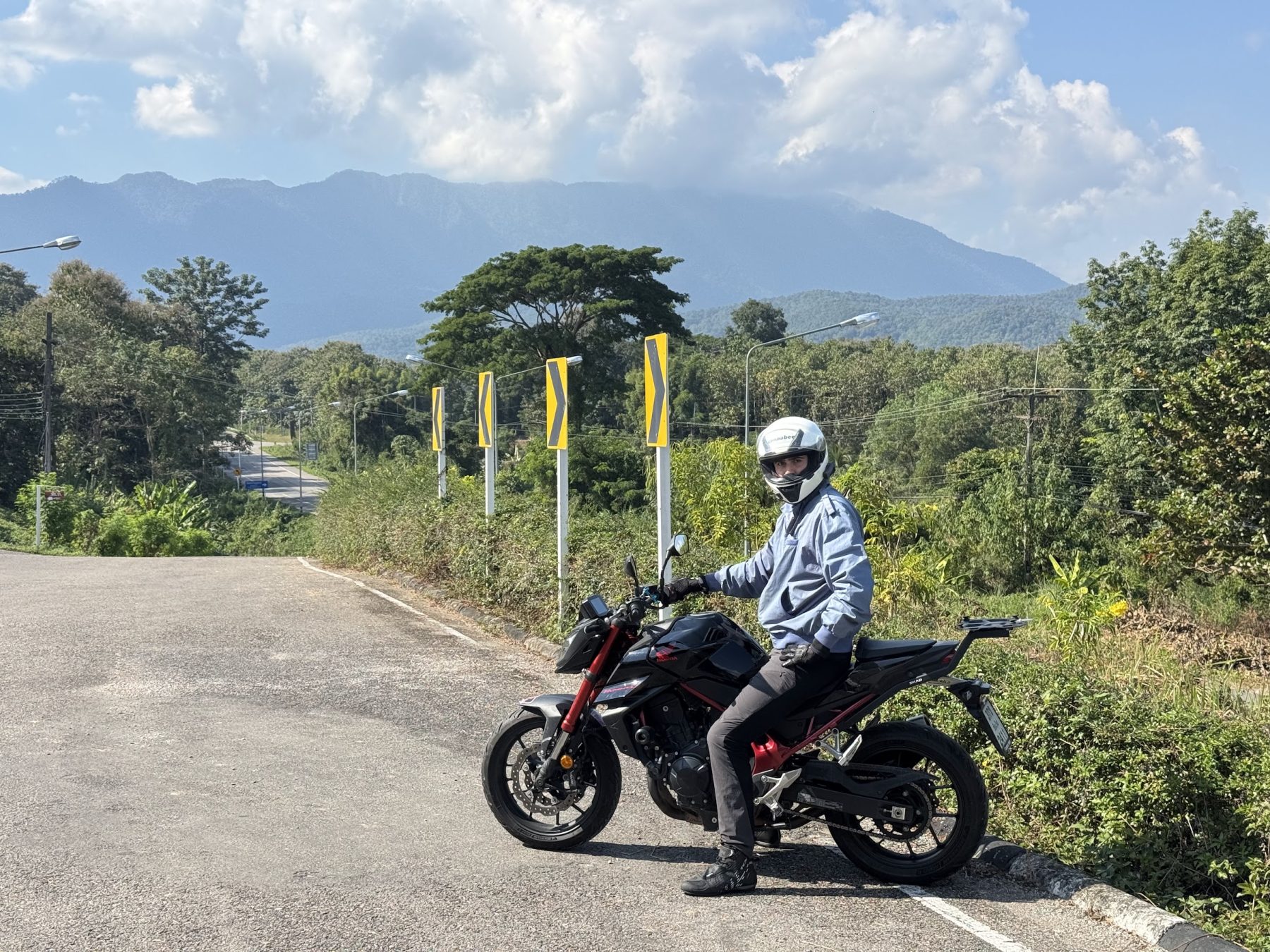
- Street Riding/Commuting: You’re dealing with stop-and-go traffic, varying speeds, and maybe shorter trips. Convenience features like modular designs (flip-up chin bars) or internal sun visors are gold here. Good ventilation is key for comfort, especially at lower speeds.
- Touring: Long days in the saddle mean comfort is king. You want a helmet that’s relatively quiet, stable at highway speeds, aerodynamic, and comfortable for hours on end. Features like good ventilation, plush liners, and potentially integrated communication system compatibility are big pluses.
- Adventure (ADV) Riding: This is the mixed bag: highway stretches, twisty backroads, and maybe some dirt or gravel trails. You need versatility: good ventilation for slower off-road work, a peak to block sun and roost, decent aerodynamics for the road sections, and often a wider eye-port for better visibility. Durability is also a factor.
- Track Riding: Speed and safety are paramount. You need a helmet with a top-tier safety rating (like Snell), excellent aerodynamics for high speeds, a secure fit that won’t budge, and usually a focus on ventilation designed for a tucked riding position. Comfort is important, but often secondary to pure performance and protection in this context.
Knowing where you spend most of your time on two wheels helps narrow down the features that matter most. Now, let’s look at some killer options that deliver without demanding top dollar.
Sedici Strada 3 Helmet: Best Budget Street Helmet
(Approx. $300)
Hitting the blacktop for your daily commute or weekend joyrides? The Sedici Strada 3 helmet is a serious contender in the budget-friendly arena.
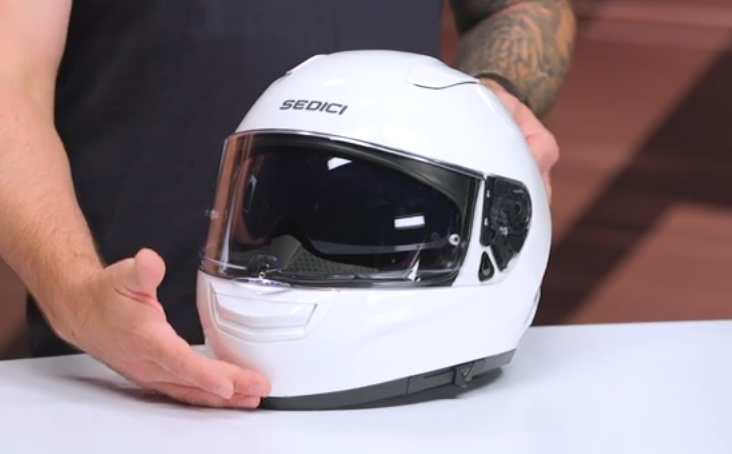
Right off the bat, the shell material stands out. Most helmets in this price range use polycarbonate (plastic). It works, it passes safety tests, but it requires more material (making it heavier) or thicker EPS foam inside to absorb impacts. The Strada 3 uses a fiberglass composite shell. This is typically found on mid-range to premium helmets. Fiberglass offers better impact energy dispersion, allowing for a slightly lighter and smaller overall helmet profile compared to a polycarb equivalent.
Fit is another area where the Strada 3 tries to overdeliver. They use four distinct shell sizes and six sizes for the internal EPS foam liner. Which means less “bobblehead” effect. Cheaper helmets use only one or two shell sizes and just vary the padding thickness. With the Strada 3, if you have a smaller head size, you get a physically smaller, more proportional helmet shell, not just thicker pads stuffed into a large shell. This improves aerodynamics, reduces weight on your neck, and frankly, looks better.
Little details make a difference on the road. The visor latch mechanism is stainless steel. Steel won’t corrode or get sticky like cheaper plastic or pot-metal latches can over time. It’s a small thing, but it speaks to the thought put into longevity.
Sedici is Revzilla’s house brand, which is interesting because Revzilla has mountains of data (reviews, returns, customer feedback) on what riders love and hate about helmets. They poured that knowledge into creating lids like the Strada 3, aiming to hit that sweet spot of features, quality, and price.
Another of the standout features of the Strada 3 is the face shield gasket. This means the rubber seal around the visor port is designed to create a tighter, more uniform seal against the shield when it’s closed. Less turbulence and fewer gaps for air to whistle through make for a noticeably quieter ride compared to many budget lids, letting you hear your engine (or your Cardo) better and reducing fatigue on longer rides.
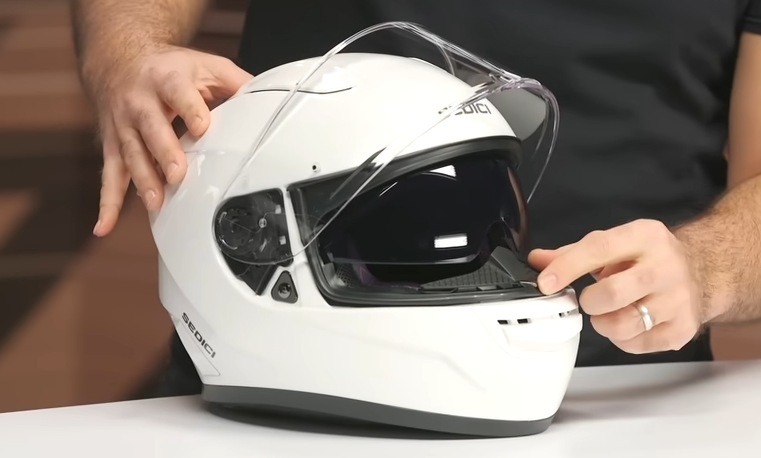
Ventilation is actually one of the stronger points on the Strada 3, especially if you’re riding in warmer weather. You’ve got dual intake vents up top, a redesigned chin vent that pulls in a decent amount of air even at lower speeds, and four exhaust ports out back to help pull heat out. The internal channeling through the EPS is deeper than you’d expect for a helmet in this range, so the airflow moves across your head instead of just hitting the front and disappearing.
Now, let’s talk about fit. The Strada 3 is known for having a more comfortable liner than most helmets in its price range. It’s plush and feels good against your skin, making those longer rides more enjoyable. Some riders find the cheek pads a little snug initially, but they tend to break in nicely over a few rides, molding to the contours of your face for a secure yet comfortable fit. A snug fit is crucial for safety, preventing the helmet from shifting in case of an impact.
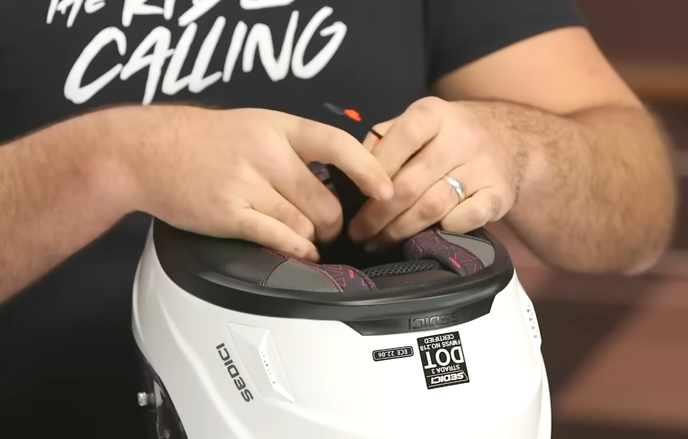
The Silver Lining: If it runs a bit louder at higher speeds, that’s an easy fix with a solid pair of earplugs, something most riders should be using anyway. What you’re getting in return is a lightweight, fiberglass shell, good airflow, and a quieter-than-usual seal around the shield for a helmet in this price range. For daily commutes or weekend rides, it delivers where it counts.
Alternative Option: If you lean towards a sportier look for the street, check out the AGV K1 S. It’s a full-face helmet with race-inspired design, slightly more aerodynamic, and may run quieter at speed. You won’t get the internal sun visor or plush liner of the Strada 3, but if you’re chasing a leaner, sportier vibe, it’s a great fit.
A premium, lightweight helmet with advanced MIPS protection and aerodynamic design for all riding positions.
- Advanced MIPS impact protection
- Lightweight fiberglass shell
- Excellent ventilation
- Pinlock insert sold separately
Our Review
We haven’t done a full deep-dive review on the Sedici Strada 3 just yet, but based on its features and reputation in the budget modular category, it’s a strong contender we often recommend. Keep an eye on It’s Better On The Road!
Shoei RF-SR Helmet: Best Budget Touring Helmet
(Approx. $450 – $500)
Okay, I know, I said $200 to $400, and this one creeps just above that line. But trust me, if you’re putting in serious miles (or plan to), the Shoei RF-SR is absolutely worth stretching the budget for. This was actually my first premium helmet after riding with budget gear for years, and it was a total game-changer in terms of comfort and fatigue. Think of it as your gateway to high-end touring comfort without the flagship price tag.
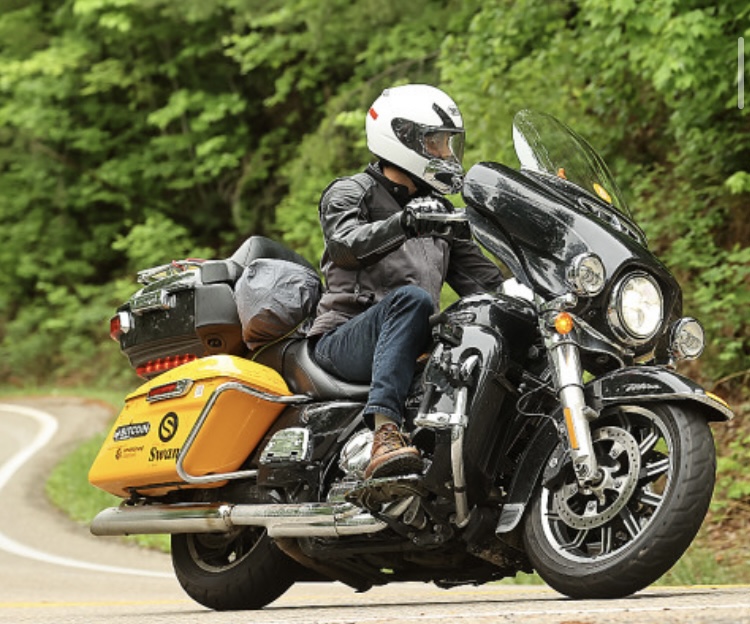
Shoei’s reputation isn’t hype. The build quality on the RF-SR is miles ahead of most sub-$400 lids. Everything feels tight, well put together, and solid in your hands. The AIM+ shell strikes a great balance between strength and weight, and once you’re rolling, it feels balanced and planted even on long highway stretches.
That shell, and the Snell safety certification this helmet packs, were the two main reasons I bought it. I was about to ride across the USA in three months, and I wanted a helmet with strong protection at an affordable price point.
What really stood out to me from day one was how quiet this helmet is. It doesn’t kill all wind noise (no helmet does) but the RF-SR manages airflow in a way that keeps buffeting and roar to a minimum. After an hour on the freeway, I wasn’t constantly adjusting or trying to block wind with my shoulders. Shoei clearly tuned this thing for real-world riding, not just wind tunnel bragging rights.

The fit and interior comfort are classic Shoei: plush 3D Max-Dry liner, zero hotspots, and just that glove-like feel around your head. I wore this lid on a 12,000 mile, 100 day ride across the USA – putting in many 6-8 hour days – and never had to think about it. No forehead pressure, no pinched ears, nothing. That kind of comfort matters more than people realize until you’re three hours deep into a ride.
Ventilation is there when you need it. It’s not super aggressive like some sport lids, but it’s smartly designed for steady airflow without generating noise. For me, it’s ideal for touring and all-day rides, even in warmer temps.
Now, you won’t get flashy features here. No internal sun visor, for one. But that’s by design. Shoei kept things simple, which helps reduce weight and complexity. I actually prefer it that way. Pop in a Pinlock (usually included) to keep fog away, toss on a tinted shield, and you’re good to go.
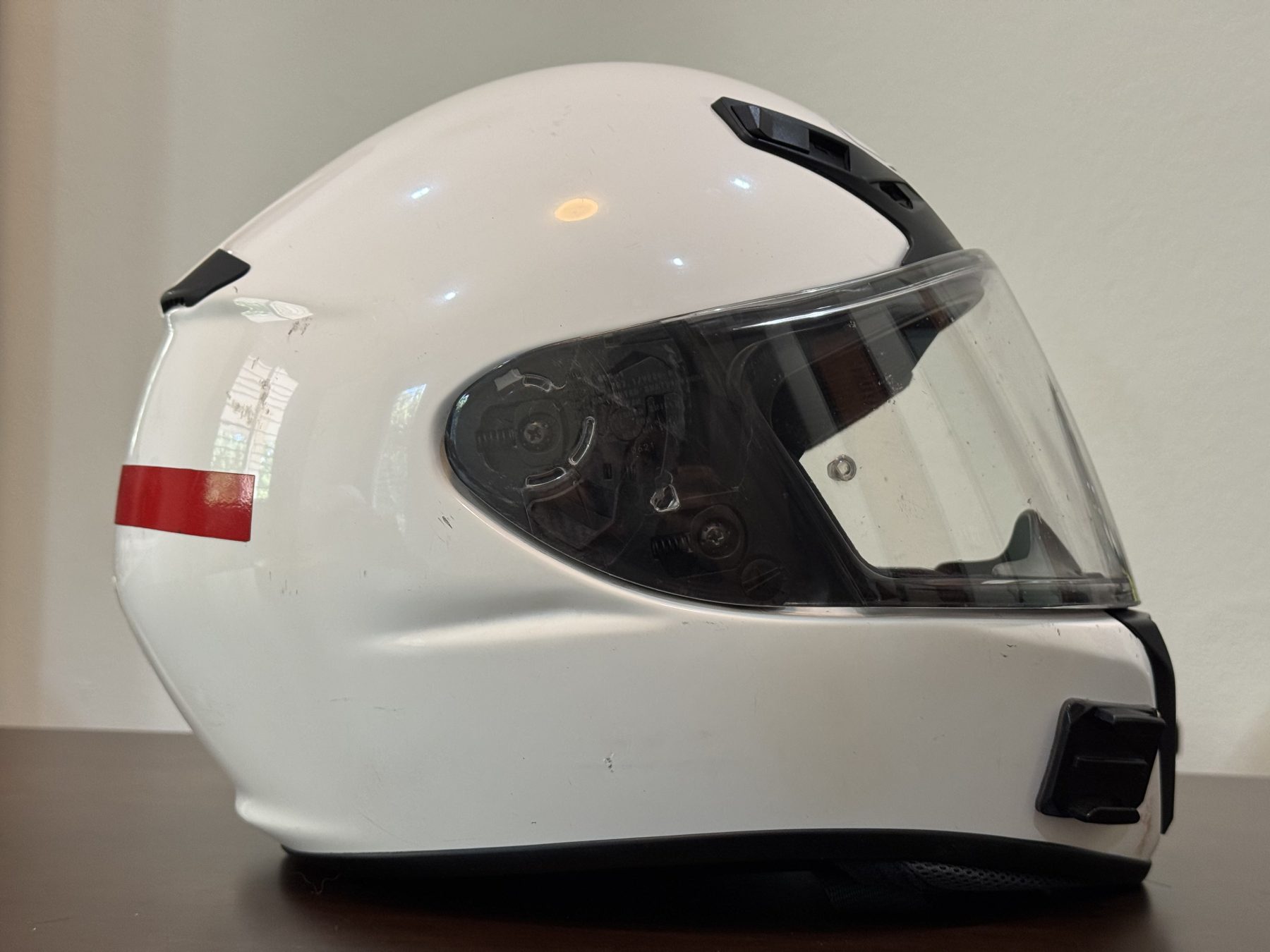
The Silver Lining: No internal sun visor means a simpler, lighter, and quieter shell design. Plus, it encourages you to use a high-quality Pinlock insert (which often comes included!) on the main visor for unbeatable fog prevention, and you can always wear sunglasses or opt for a tinted accessory shield.
The Shoei RF-SR is for the rider who prioritizes quality, quietness, and long-haul comfort over flashy features. It’s a workhorse helmet that delivers premium performance where it counts most for touring, making that slight price jump justifiable for many.
Alternative Option: Now, if the RF-SR’s pure, full-face approach isn’t quite what you need, and you’re looking for the convenience of a modular design packed with features for serious touring, a helmet like the Bell SRT Modular Helmet is a benchmark in that category, for around $350-$400.
Evan rode in this helmet across America in 2022 and has worn it the tropical climate of Thailand as well. It's the ideal all-around street and touring helmet for a fair price: master of none, but great at everything. Read our long term review here.
- Sturdy build quality from the padding to the visor
- Composite AIM shell (not plastic / polycarbonate)
- Comfortable and snug liner
- Durable (I've battered the poor thing)
- Affordable 💵
Our Review
I have a detailed review of this specific helmet after four years of riding in it: check out our full Shoei RF-SR Helmet Review for a deeper dive into why we rate it so highly.
Scorpion EXO-AT960 Helmet: Best Budget Adventure Helmet
(Approx. $270 – $310)
Adventure riding demands a helmet that can do it all: munch miles on the highway, explore winding backroads, and handle the dust and bumps of a trail. Finding a budget helmet that juggles these tasks well can be tricky, but the Scorpion EXO-AT960 has become a go-to favorite for a reason.

This helmet is like the Swiss Army knife of budget lids. It’s a modular design, giving you that flip-up chin bar convenience. Super handy when you stop for a photo, grab a drink, or navigate a tricky slow-speed section off-road.
It comes equipped with a removable peak (visor) to block sun glare and deflect roost from riders ahead of you on dusty trails. But here’s the clever part: you can also remove the main face shield and wear goggles, just like a dirt bike helmet, thanks to the wide eye-port. Or, remove the peak and run it like a touring helmet for better aerodynamics on long highway stretches. That versatility is its superpower.
Scorpion uses an advanced polycarbonate shell, keeping the price down while still providing DOT certification. It’s not the lightest helmet out there, partly due to the modular mechanism and peak, but the balance is decent.

Ventilation is pretty good, designed to work at both lower off-road speeds and higher road speeds. You get chin and top vents, plus rear exhausts. And yes, it includes that all-important internal drop-down sun visor, a lifesaver when transitioning between bright sun and shaded trails or tunnels.
The Silver Lining: Okay, it’s not the lightest helmet. That slight extra weight, however, can contribute to a feeling of stability, especially in crosswinds on the highway when you’re loaded up with gear. It feels planted.

The Scorpion EXO-AT960 delivers incredible versatility and features for its price point. If you’re an ADV rider looking for one helmet that can handle pretty much anything you throw at it without breaking the bank, this is likely your champion.
Alternative Option: If you prefer a non-modular ADV helmet in this price range, the Bell MX-9 Adventure MIPS is a strong contender. It’s lighter, has MIPS rotational impact protection (a bonus safety feature), and great ventilation, but lacks the flip-up chin bar and internal sun visor.
A do-everything helmet, it's as comfortable on trails as the highway - though not as solid as premium competitors like the Arai XD-5. One of the rare modular ADV helmets, it's also it's DOT and ECE approved.
- Modular chinbar (rare in ADV helmet)
- Removable peak
- Decent airflow
- Drop down sun shade
- DOT and ECE 22‑06 approved
- Susceptible to visor leaks and fogging in heavy rain
- Sun peak vibrates noticeably at highway speeds
Our Review
We’ve got a full review in the works, but we called it out earlier in this article: 4 Best Dirt Bike Helmets with Bluetooth (plus one to avoid!).
AGV K3 Helmet: Best Budget Sport/Track-Inspired Helmet
(Approx. $250 – $350)
Alright, let’s bring some Italian style and sporty performance to the budget category with the AGV K3. Now, right off the bat, we need to be clear: while the original prompt suggested this for track, and it absolutely has track inspiration, it’s crucial to understand its safety certifications, especially if you’re doing organized track days.
The AGV K3 boasts the latest ECE 22.06 safety rating. This is a rigorous European standard, updated recently to be even more comprehensive than the old 22.05.

It tests against a wider range of impact speeds and angles, including rotational forces. So, from a safety perspective, especially for the street, the K3 is packing modern, high-level protection. You’ll also find the standard DOT certification.
What you typically won’t find on the K3 is a Snell rating. Why does this matter? Many track day organizations in the US require a Snell-certified helmet (like the Scorpion EXO-R420, or the HJC i10). So, if serious track days are your primary goal, the K3 might not be the right choice unless your specific track organizer explicitly allows ECE 22.06 helmets without Snell. Always check the rules of the track day provider first! And pick up the Shoei RF-SR we wrote about earlier if you need a Snell rated helmet.

Where the K3 excels is as a sporty street helmet that’s perfectly capable for spirited canyon carving or even your very first, more casual track day where rules might be less stringent. It inherits AGV’s racing DNA in its aerodynamic shape, designed to be stable at speed and cut through the air efficiently. You get that aggressive AGV look without the Pista GP RR price tag!
Ventilation is usually quite good on AGV sport helmets, designed to flow air effectively when you’re in a more aggressive riding posture. Expect adjustable chin and top vents with rear extractors to pull warm air out.

Comfort is solid, with AGV using quality liner materials (their Dry-Comfort fabric) that are removable and washable. The fit is often geared towards intermediate oval head shapes but can vary slightly. AGV’s eye ports are typically nice and wide, and the K3 is no exception giving you a great field of vision whether you’re navigating traffic or looking through a corner.
The visor system is usually Pinlock-ready, offering the best anti-fog performance. Visor changes are typically straightforward with AGV’s quick-release mechanisms. Depending on the specific K3 generation/variant available, it might or might not have an internal sun visor. The latest ECE 22.06 versions often omit this for simplicity and shell integrity, focusing purely on sport performance. Let’s assume the current main K3 model prioritizes the sport focus without the sun visor.

The Silver Lining: No Snell rating. While that limits its use for some track days, the ECE 22.06 certification is arguably more reflective of diverse, real-world crash scenarios, including lower-speed impacts and rotational forces. It allows AGV to create a protective helmet that might be shaped or weighted slightly differently than a Snell-focused design, potentially optimizing it better for street aerodynamics and comfort.
The AGV K3 is an excellent choice for the rider who loves sporty aesthetics and wants a high level of modern ECE-certified protection for the street. It brings that premium Italian brand feel and performance down to a much more accessible price point.
Alternative Option: If you prefer a lighter carbon fiber shell, the Sedici Duale Forged Carbon Helmet presents a different approach. You’ll trade the K3’s sport-focused styling for the Duale’s flip-up versatility and premium materials, gaining touring features, for around $350.
A sleek, aerodynamic helmet built for comfort, safety, and everyday performance.
- Excellent ventilation and wide field of vision
- Drop-down sun visor adds convenience for sunny rides
- Removable, quick-drying interior with a comfortable fit
- Slightly heavier than some premium models
Our Review
We haven’t completed a full, in-depth review of the latest AGV K3 model just yet. However, AGV’s reputation for quality and the K3’s position as a popular entry point into their sport lineup make it a helmet worth serious consideration for sporty street riders.
For a detailed rider experience with the AGV K3, check out this comprehensive test ride review.
Quick Comparison: Budget Helmet Showdown
| Feature | Sedici Strada 3 | Shoei RF-SR | Scorpion EXO-AT960 | AGV K3 Helmet |
| Primary Use | Street / Commuting | Touring / Street | Adventure / Touring | Street / Sport / Casual Track |
| Type | Modular | Full-Face | Modular ADV | Full-Face |
| Approx. Price | $300 | $430 – $450 | $290 – $310 | $250 – $350 |
| Safety Cert. | DOT & ECE | DOT & Snell M2020 | DOT | DOT & ECE 22.06 |
| Shell Material | Fiberglass/Kevlar Comp. | Multi-Ply Matrix AIM+ | Advanced Polycarbonate | High-Res Thermoplastic |
| Internal Sun Visor? | Yes | No | Yes | No (Typically on current model) |
| Key Strength | Ventilation, Fit | Quality, Quietness, Comfort | Versatility & Features | Sporty Style, ECE 22.06 Safety, Brand |
| Potential Con | Noisier / Heavier than other options | Price / No Sun Visor | Heavier, and Polycarbonate Shell | No Snell Rating |
| Get One | Check Price | Check Price | Check Price | Check Price |
Helmet Hunting on a Budget: What to Look For
Okay, we’ve looked at some great specific helmets, but how do you choose the right one for you from all the budget options out there? Here’s what to keep in mind:
Safety First (Seriously):
- DOT: The minimum legal standard in the US. Any helmet sold for road use must have this. It tests basic impact protection.
- ECE (22.05 or 22.06): The European standard, generally considered more comprehensive than DOT, testing things like abrasion resistance and retention systems more thoroughly. ECE 22.06 is the newer, tougher version. Seeing DOT and ECE is a good sign.
- Snell (M2020 or M2025): A voluntary, stricter standard often required for track riding. It involves higher energy impacts and penetration tests. If you see Snell, you’re getting a high level of tested protection.
- Don’t Skimp: Even on a budget, make sure your helmet has at least DOT, and preferably ECE or Snell certification. This proves it passed standardized safety tests. “Budget” should never mean “unsafe.”
Fit is EVERYTHING:
- A helmet only protects you if it fits correctly. Too loose, and it can shift or come off in a crash. Too tight, and it’ll cause painful pressure points (hello, headaches!).
- Know Your Head Shape: Are you round oval, intermediate oval (most common), or long oval? Different brands and models fit different shapes better. Try helmets on whenever possible!
- Measure: Use a soft tape measure around the largest part of your head (above eyebrows, around the back) to get your size in cm or inches. Consult manufacturer size charts, but remember shape matters just as much as size.
- Check the Fit: When trying one on, it should feel snug all around with no major pressure points. It shouldn’t move much when you shake your head side-to-side or up-and-down. Check that the cheek pads are firm against your cheeks. Wear it for 15-20 minutes in the store if you can, to see if pressure points develop.
Helmet Type Matters:
- Full-Face: Offers the most coverage and protection. Ideal for most types of riding.
- Modular: Convenience of a flip-up chin bar. Great for touring and commuting, often a bit heavier and potentially noisier than full-face. Ensure it’s rated for protection with the chin bar down.
- ADV: Full-face or modular base, but with added peak, often wider eye-port for goggles, and enhanced ventilation for mixed-surface riding.
- Open-Face (3/4): Covers top, back, and sides, but leaves your face exposed. Less protection, but maximum airflow. Popular with cruiser and scooter riders.
- Half-Helmet: Minimal coverage. Offers the least protection.
- For budget recommendations focused on safety and versatility, we typically stick to Full-Face, Modular, and ADV.

Comfort Features Count (Especially on Longer Rides):
- Liner: Look for removable, washable, and moisture-wicking liners. A comfortable liner makes a huge difference.
- Ventilation: More vents usually mean better airflow, but can sometimes increase noise. Look for adjustable vents you can open or close.
- Weight: Lighter helmets generally cause less fatigue, especially on long rides. However, sometimes budget helmets achieve lower prices using heavier materials (like polycarbonate vs. fiberglass/carbon). Balance weight against features and price.
- Noise: Helmets vary wildly in how much wind noise they let in. Touring helmets often prioritize quietness. Reading reviews and looking at shell shape/features (like neck rolls) can give clues. Earplugs are always recommended!
Visor & Vision:
- Optics: Should be clear and distortion-free.
- Anti-Fog: A Pinlock-ready visor (with the insert often included or sold separately) is the best defense against fogging up. Internal sun visors should also resist fogging.
- Anti-Scratch: Most visors have some scratch resistance, but treat them carefully!
- Internal Sun Visor: Super convenient, but adds a bit of weight and complexity. Check the mechanism is easy to use with gloves.
- Field of View: Make sure you have good peripheral vision.
Save on Price, Not on Protection
Finding the right motorcycle helmet doesn’t have to mean choosing between protecting your head and protecting your bank balance. As you can see, there are some absolutely great options out there between $200 and $400 (and even below!) that deliver certified safety, great features, and comfort for your specific type of riding.
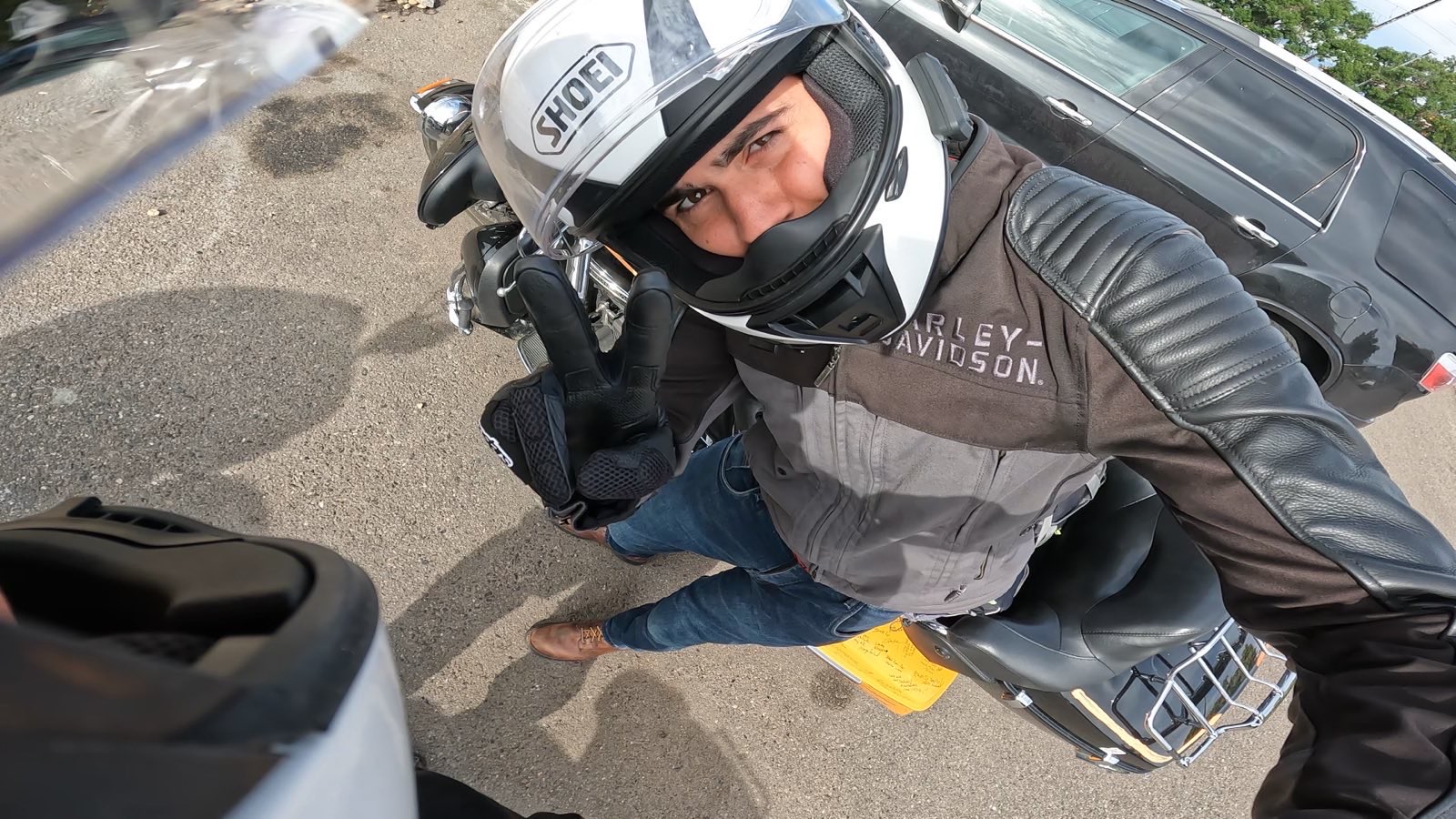
Whether it’s the convenience of the Sedici Sistema II for city streets, the refined quietness of the Shoei RF-SR for eating up highway miles, the versatility of the Scorpion EXO-AT950 for tackling any road (or trail), or the unbelievable safety-per-dollar of the Scorpion EXO-R420 for hitting the track, a great budget helmet is within reach.
The most important things? Get the right type of helmet for your riding, ensure it has the safety certifications you need, and above all, make sure it fits properly. Try them on, compare features, and pick the one that feels right for you.
Stay safe out there, enjoy the ride, and know that you made a smart choice for both your head and your wallet. See you on the road!
Related

Carbon Fiber Modular Helmets: Ultimate Flip-Up Lids
Discover carbon fiber modular helmets that deliver flip-up convenience, lightweight strength, and serious protection for every ride.

